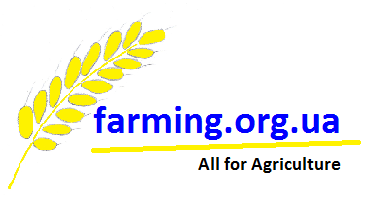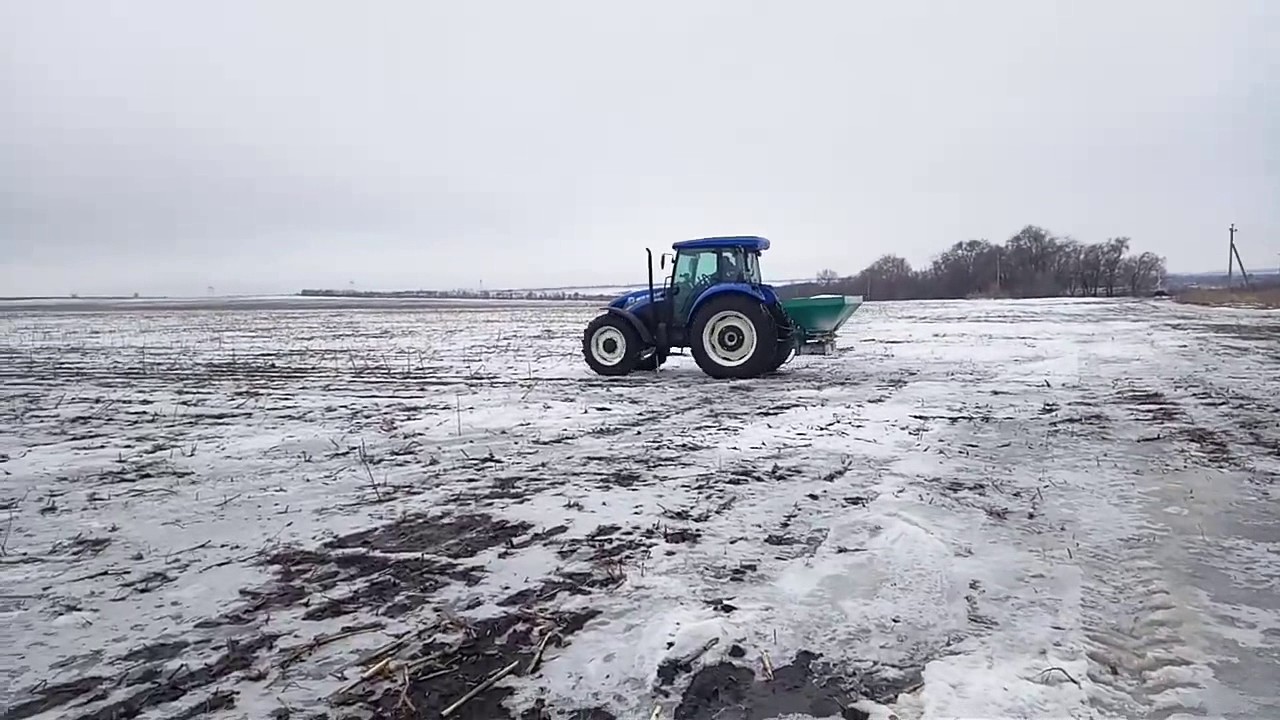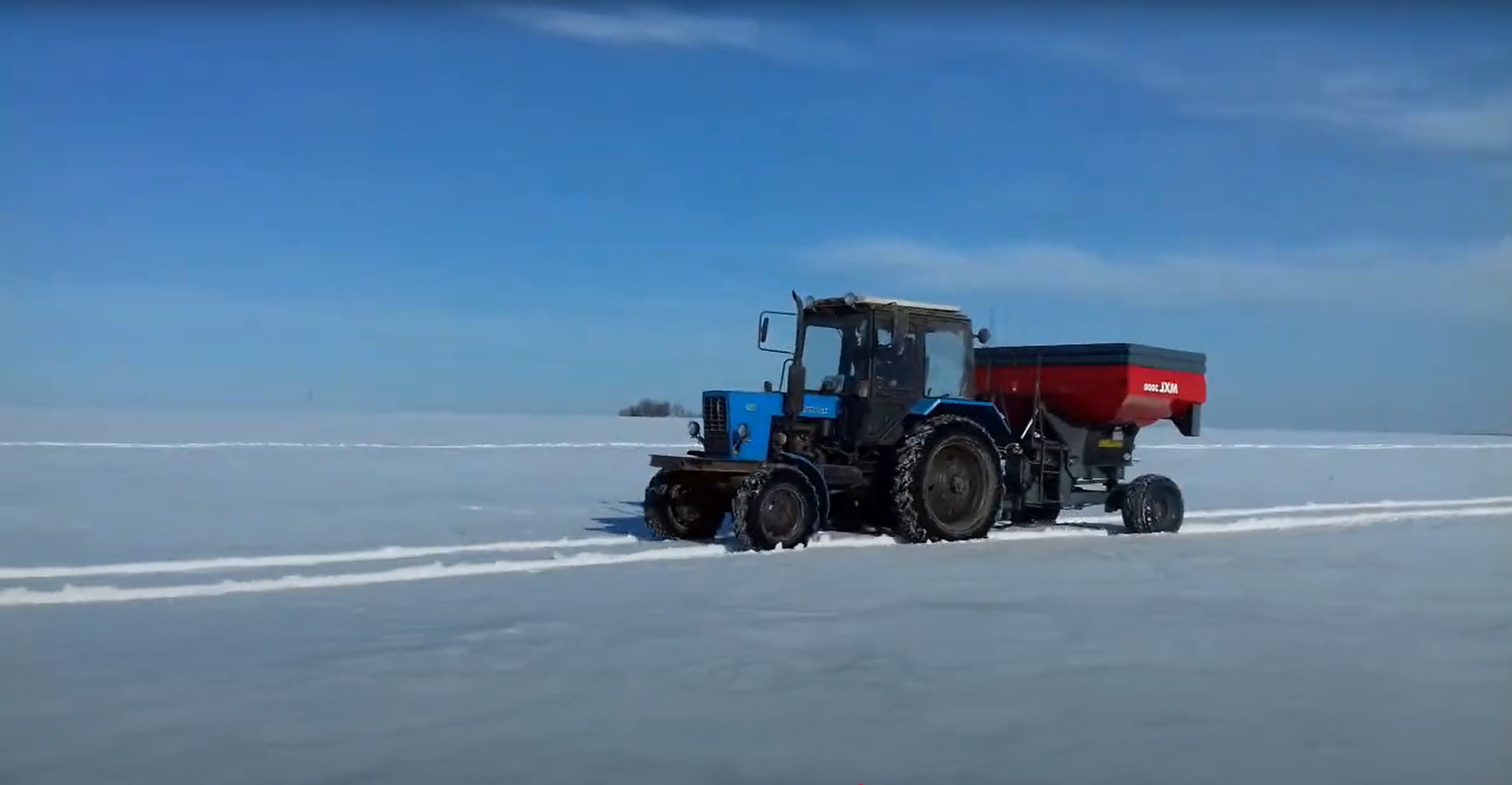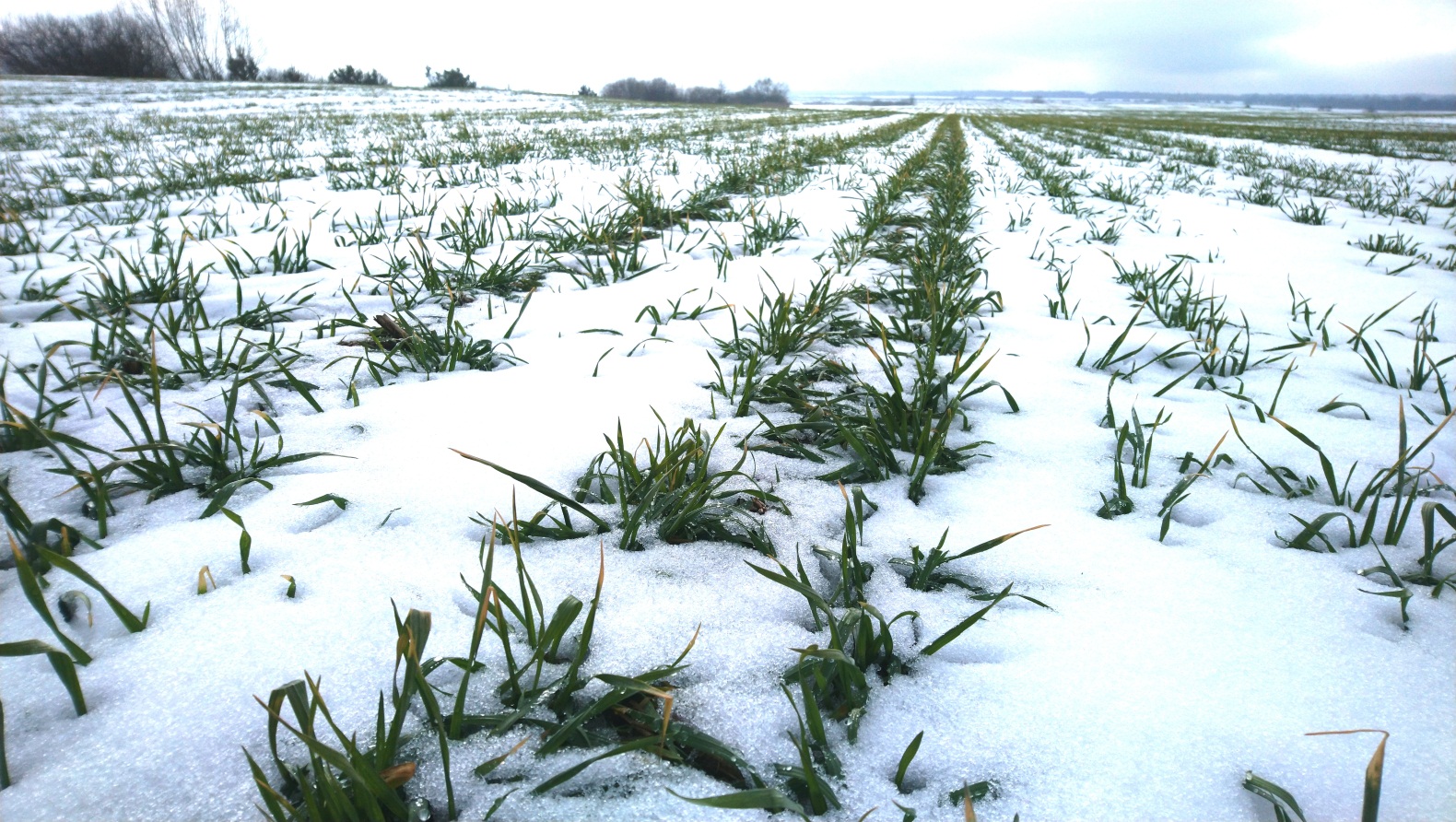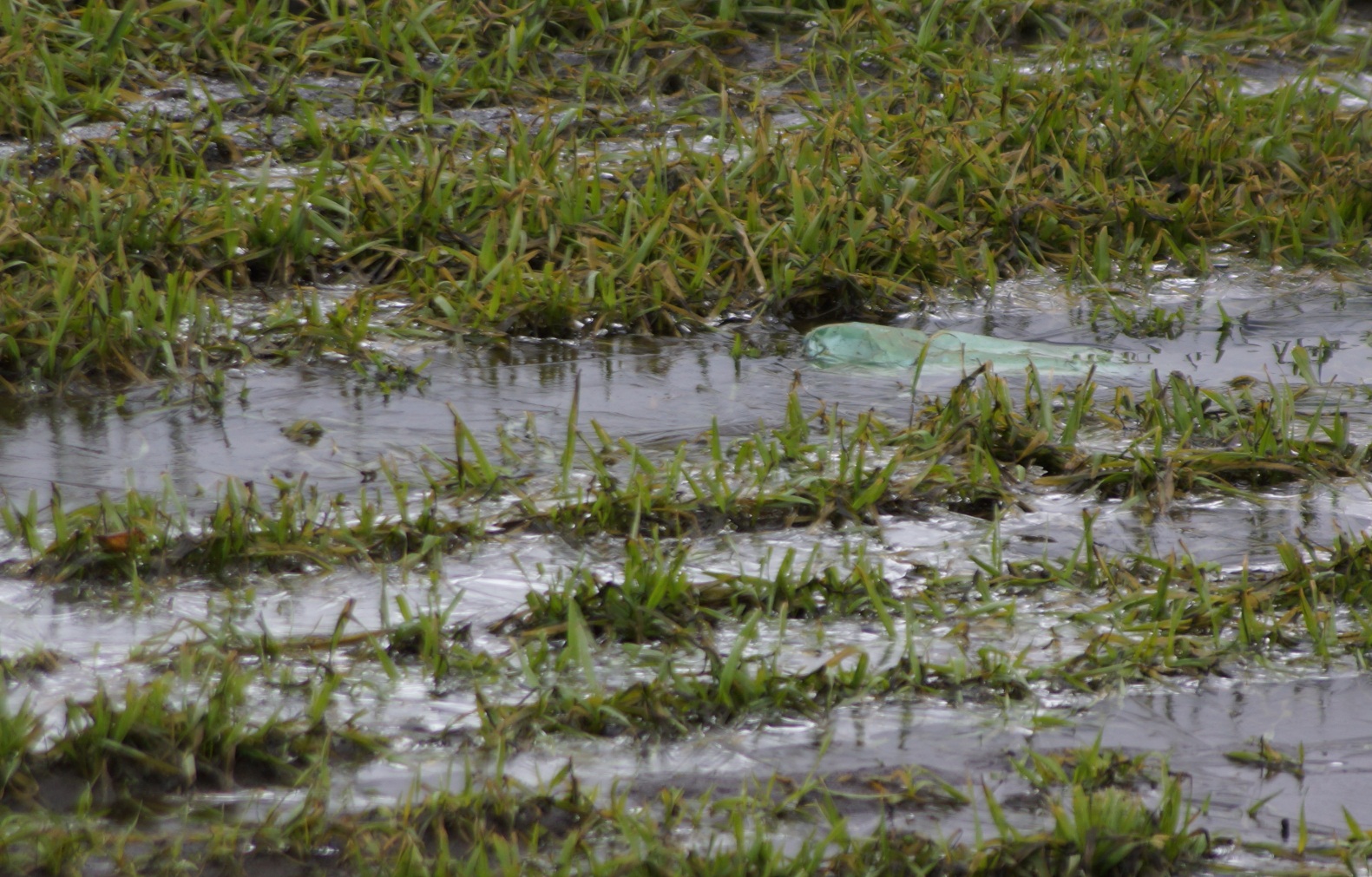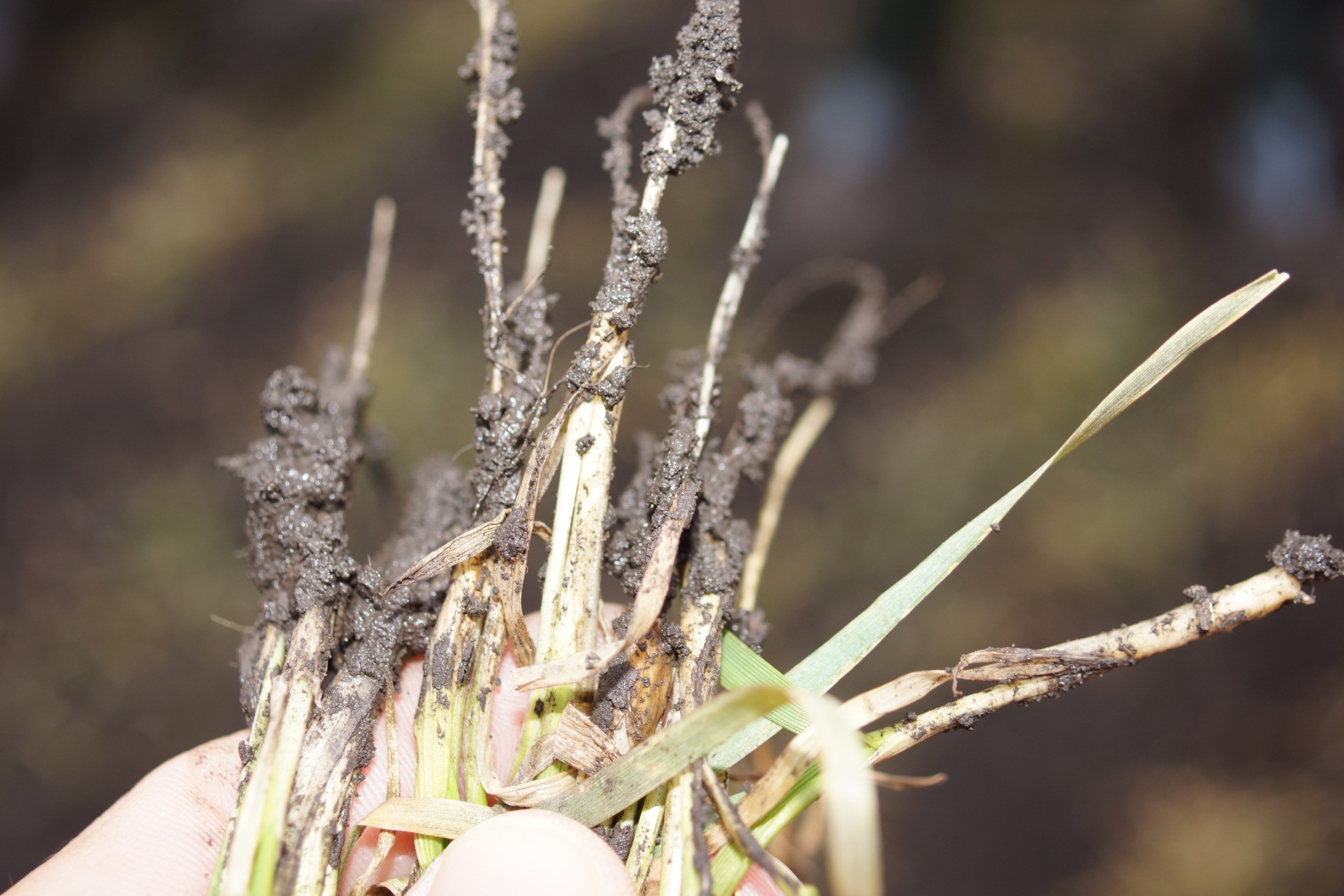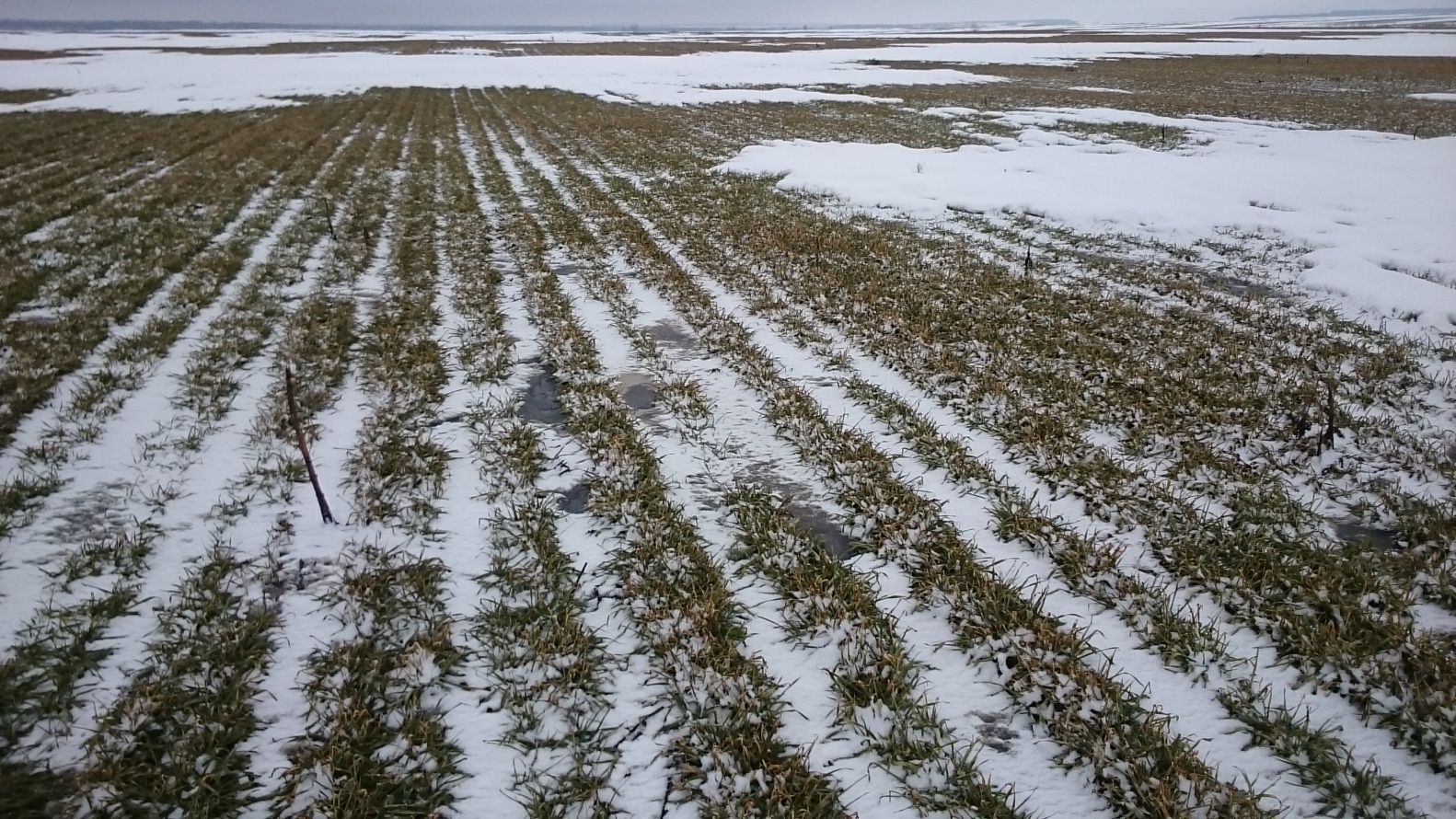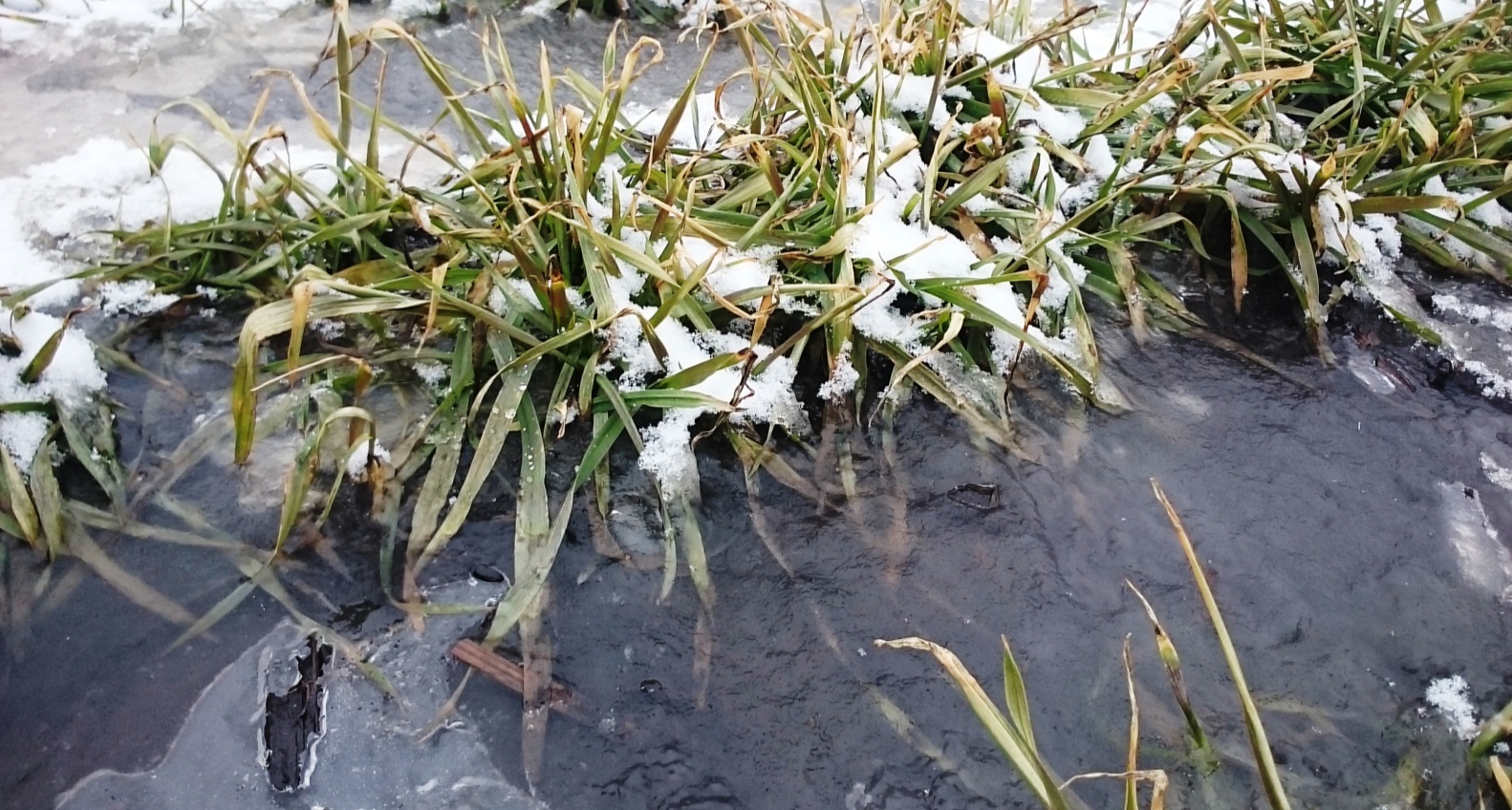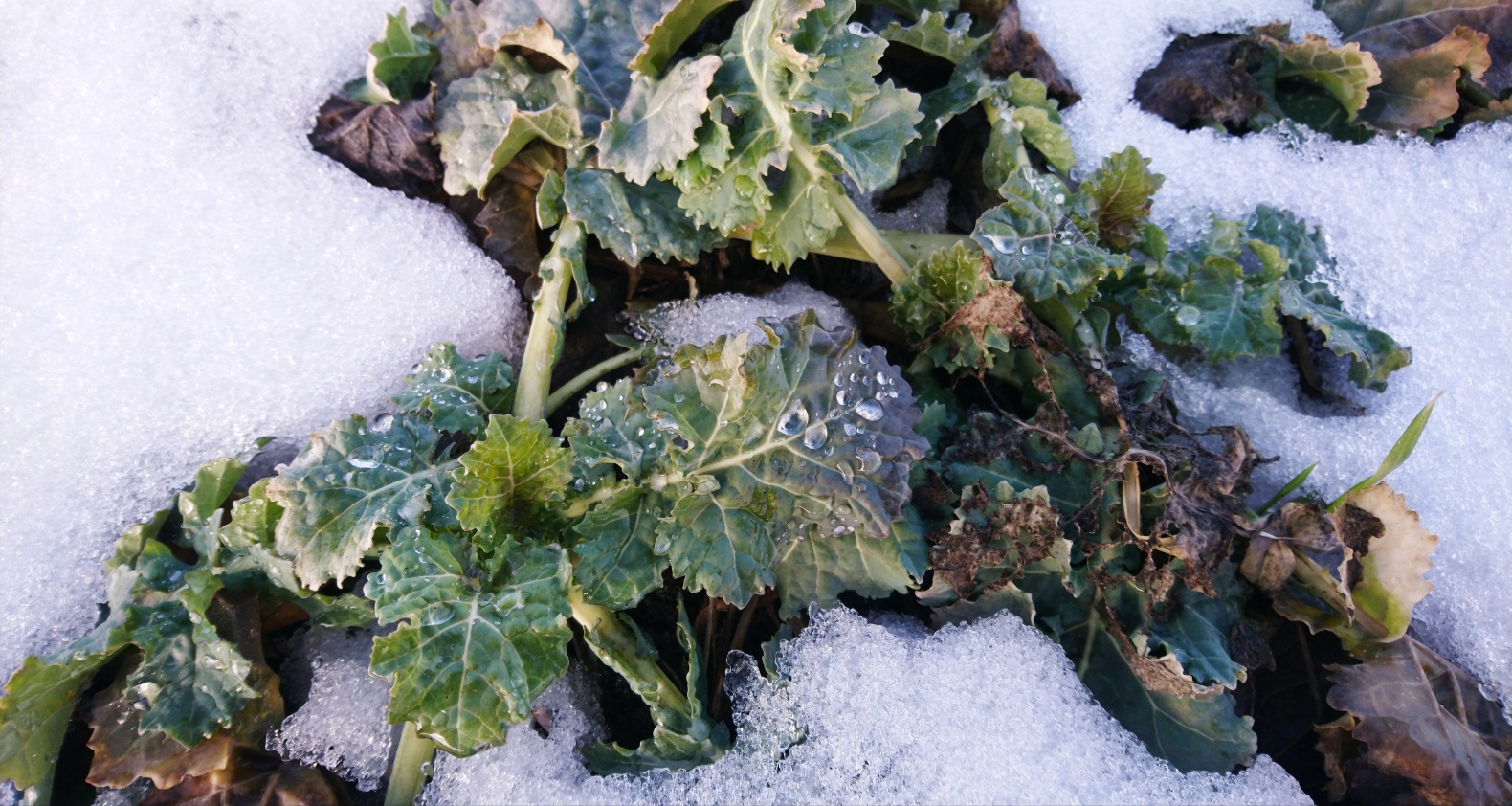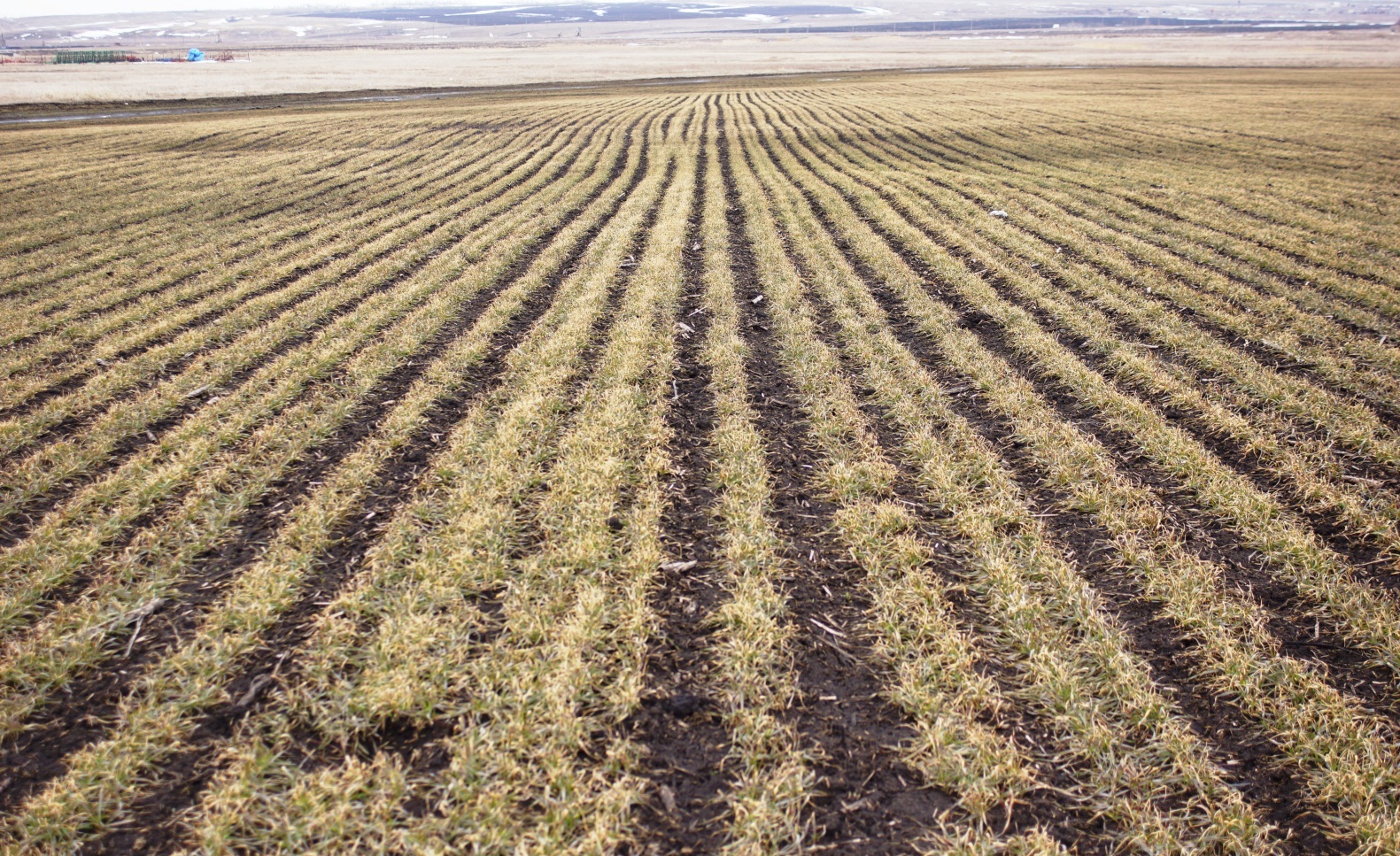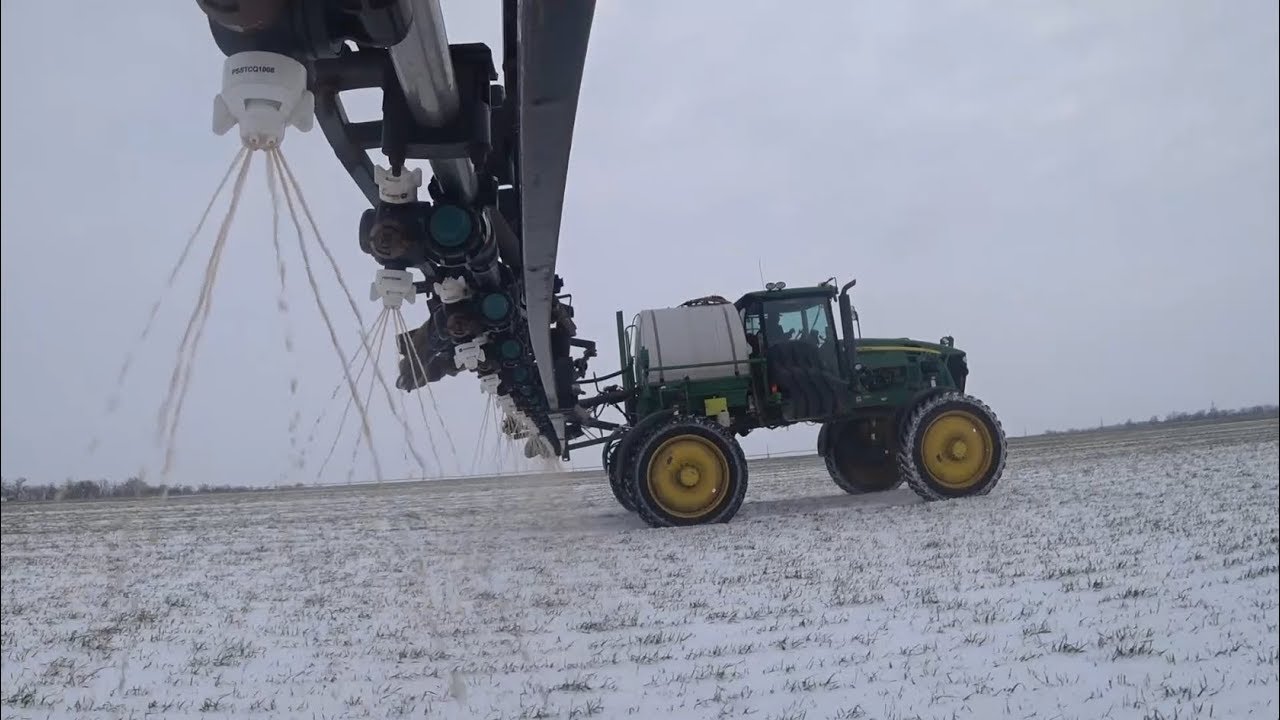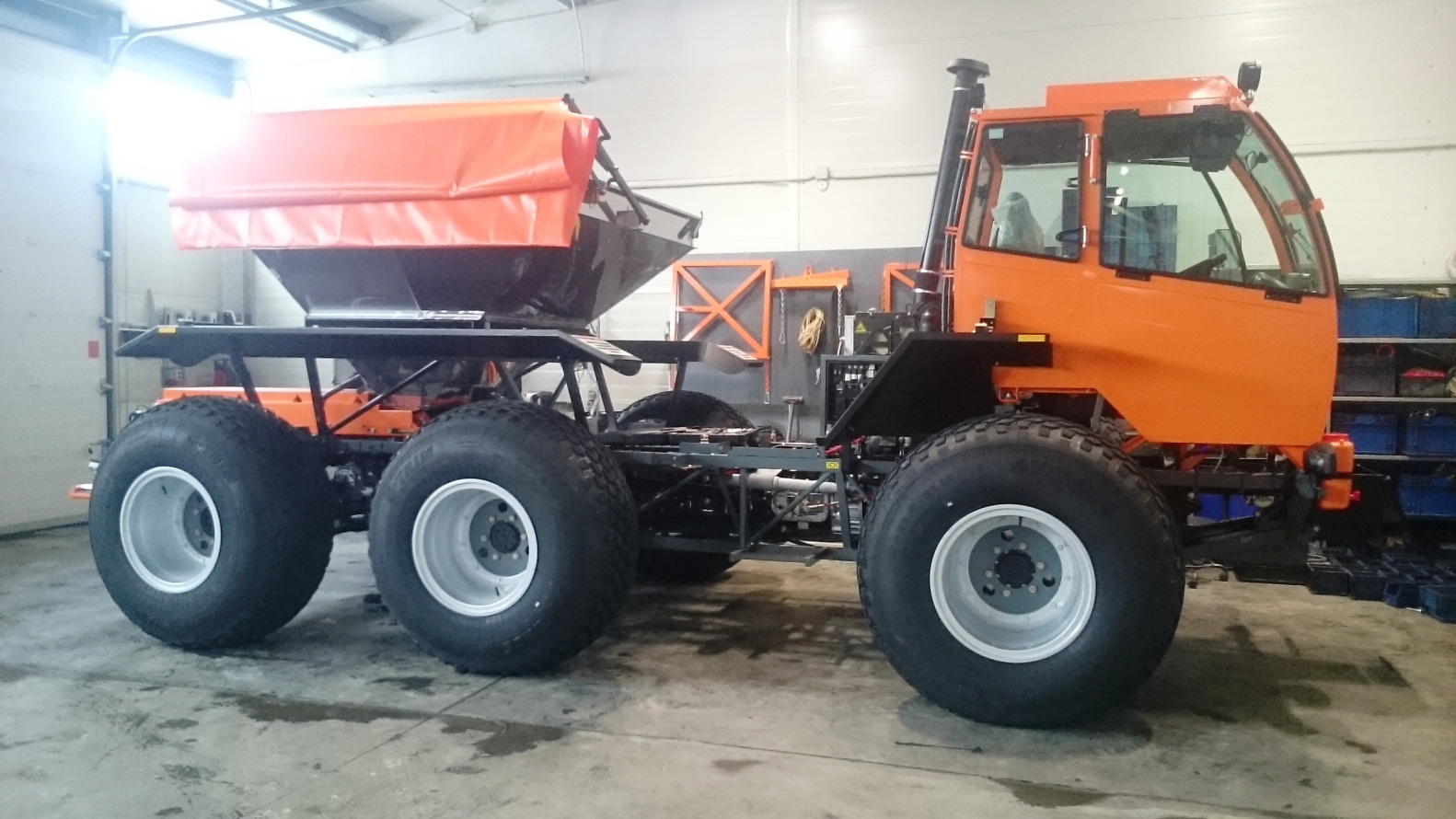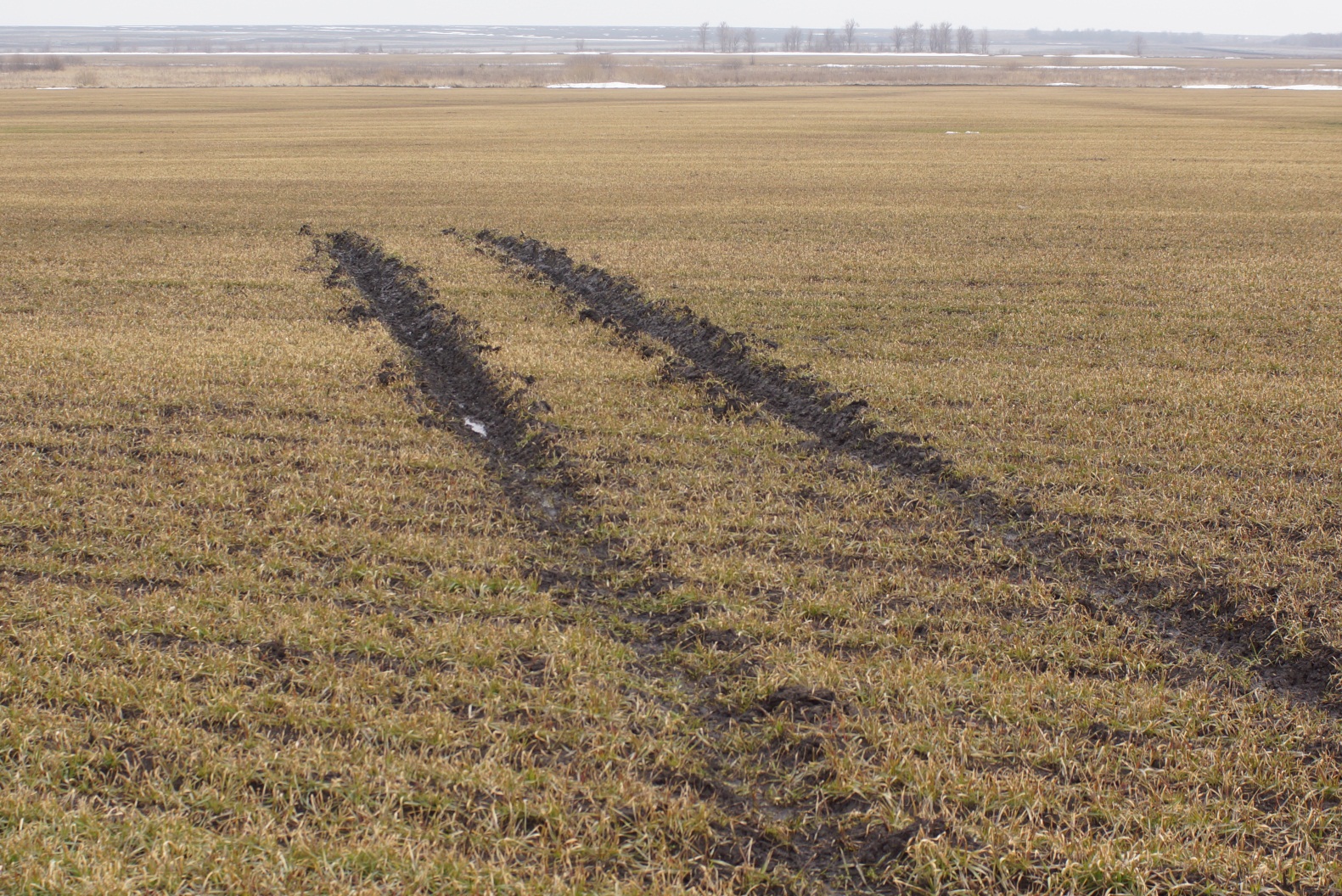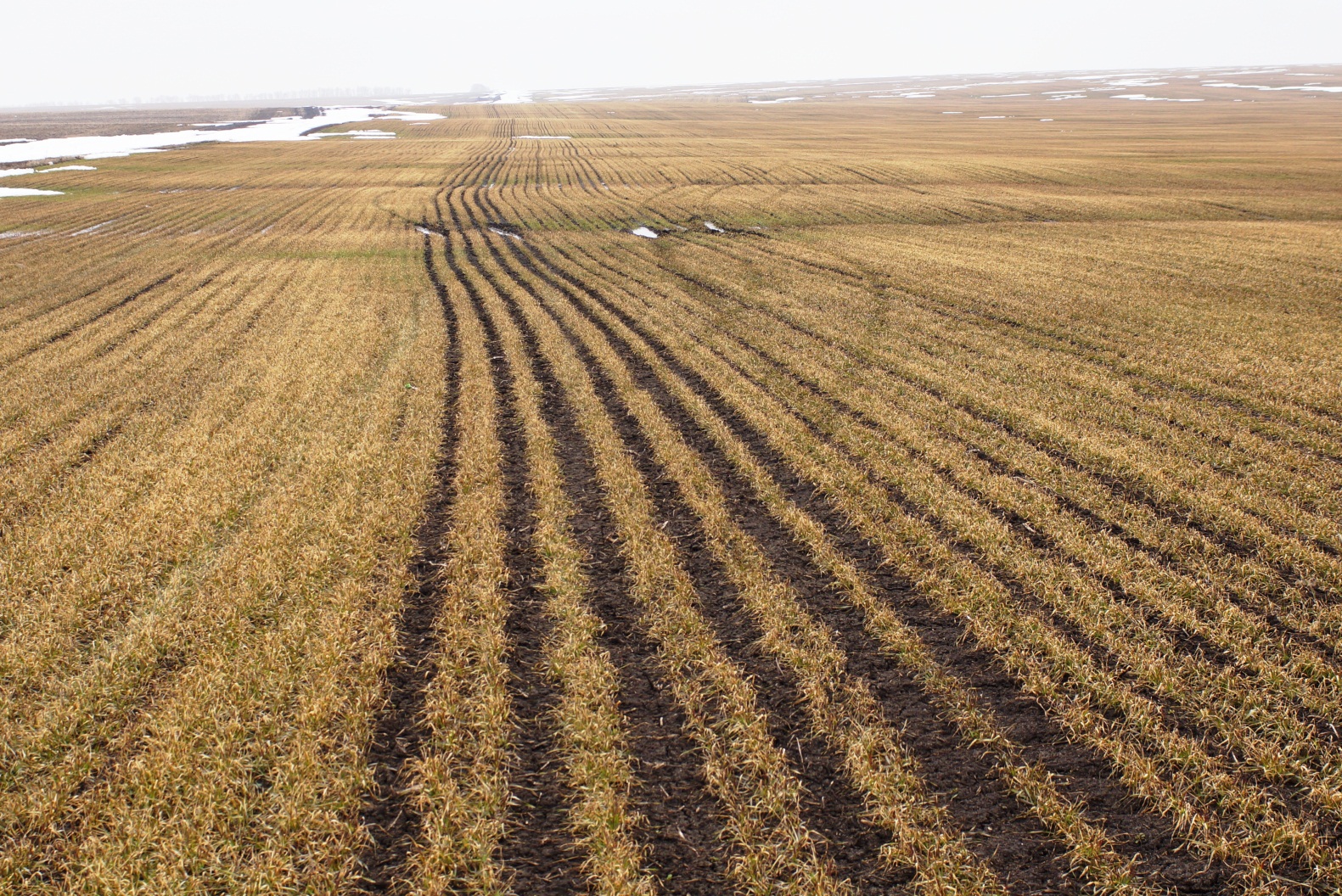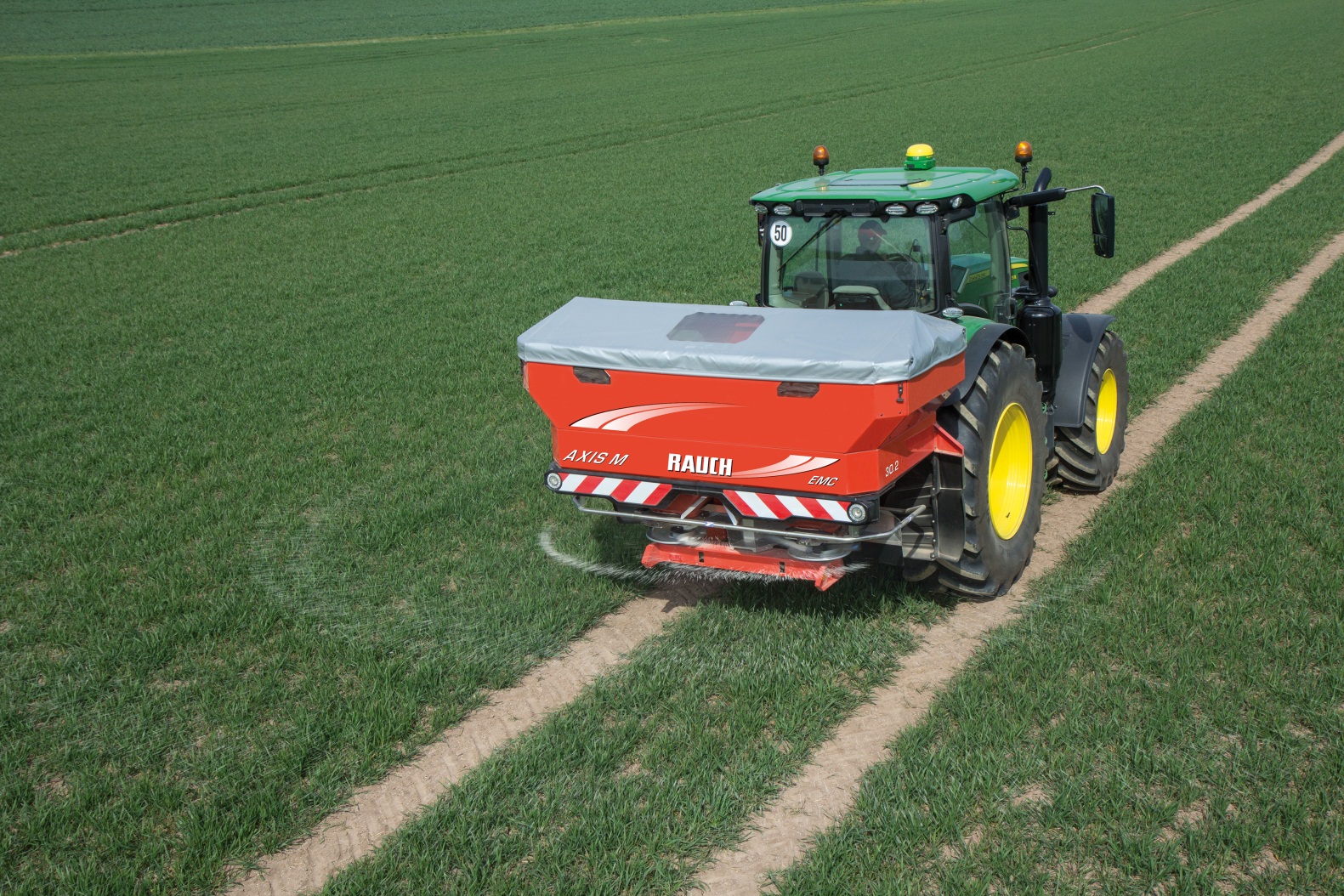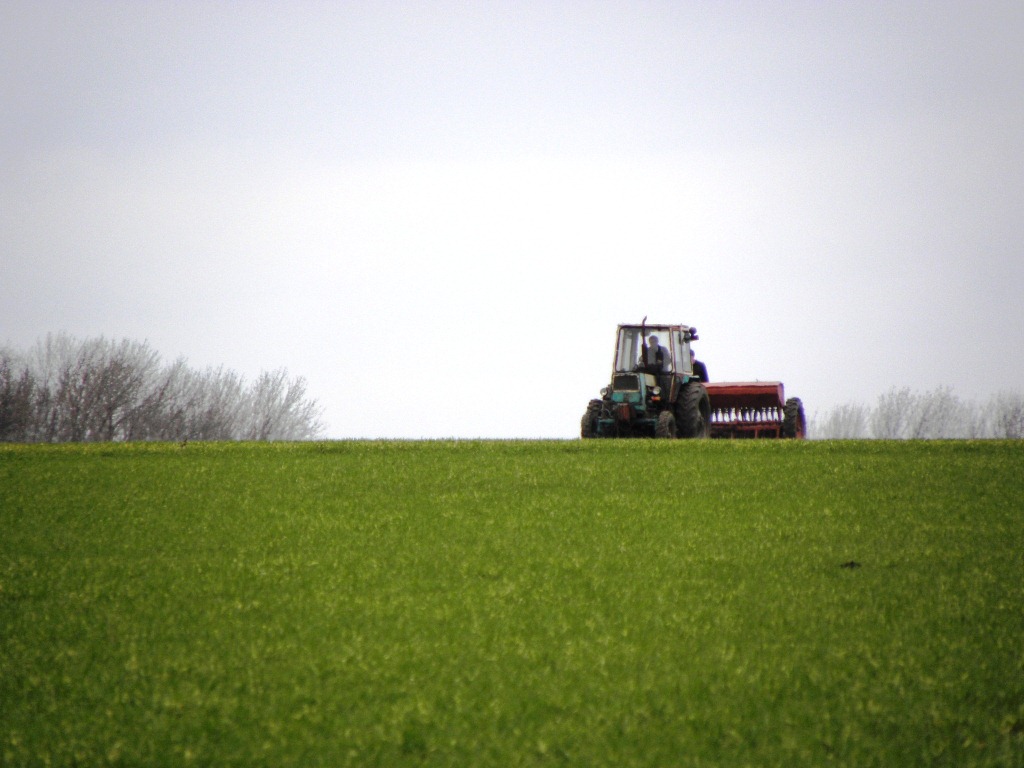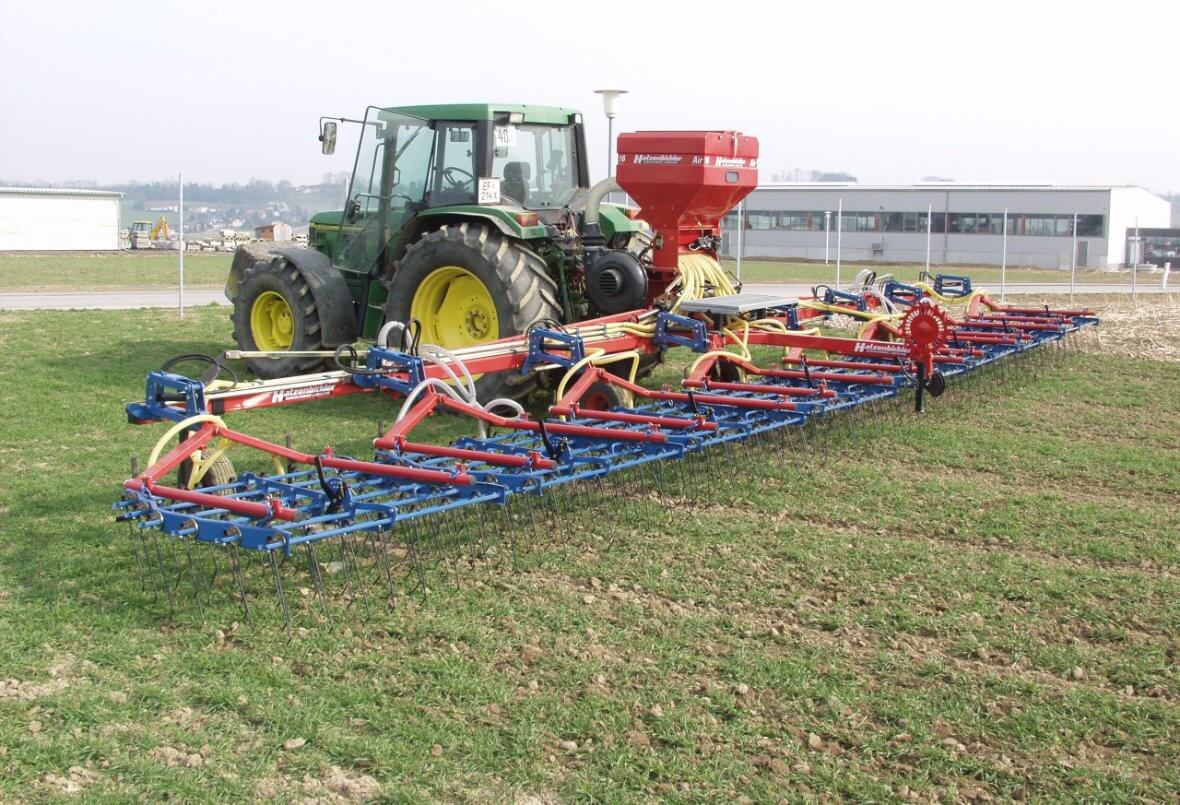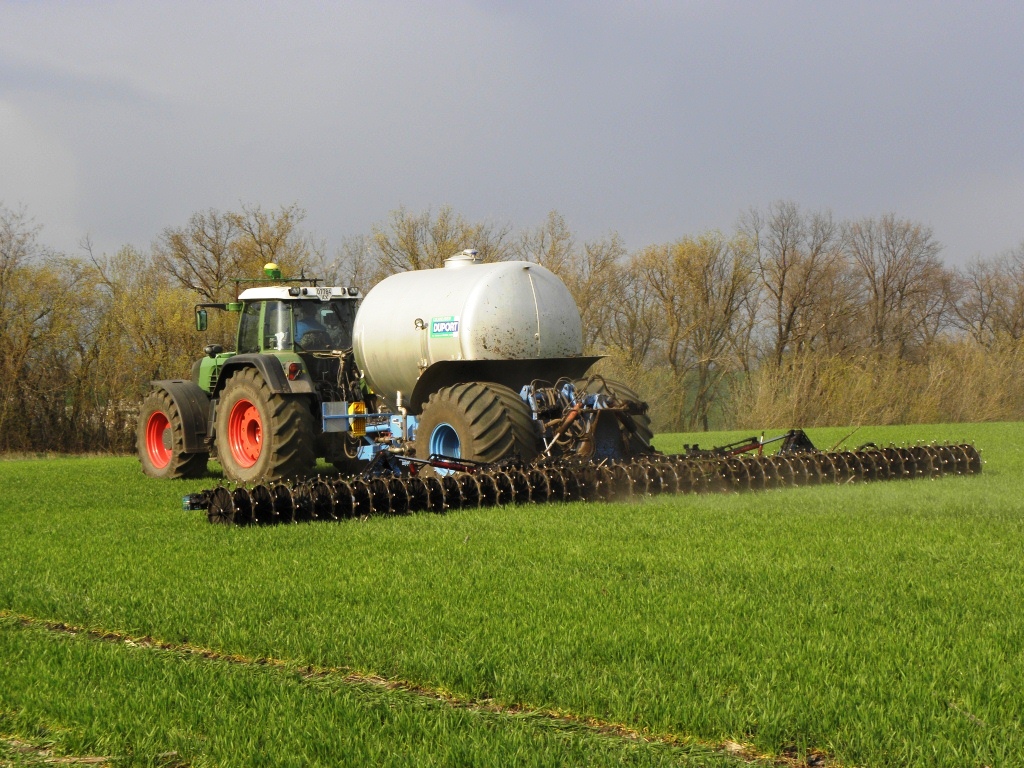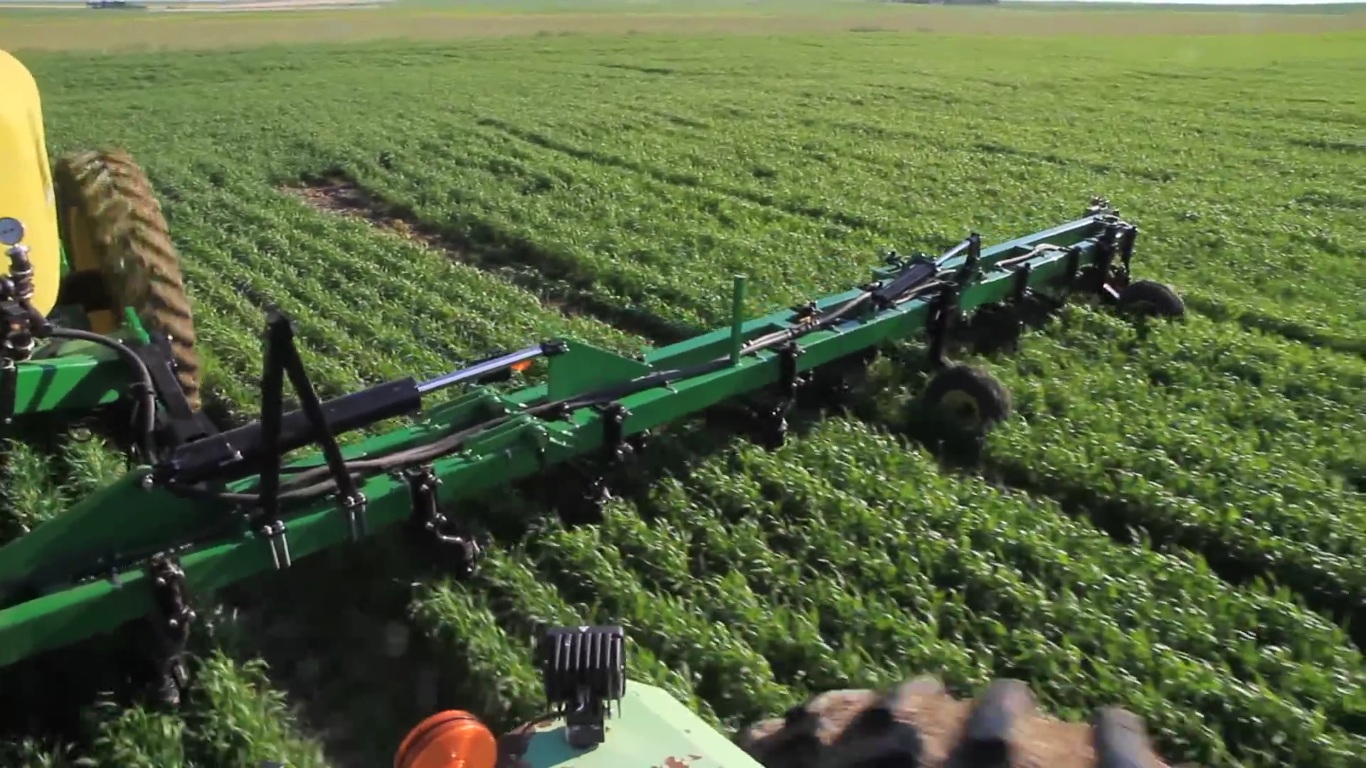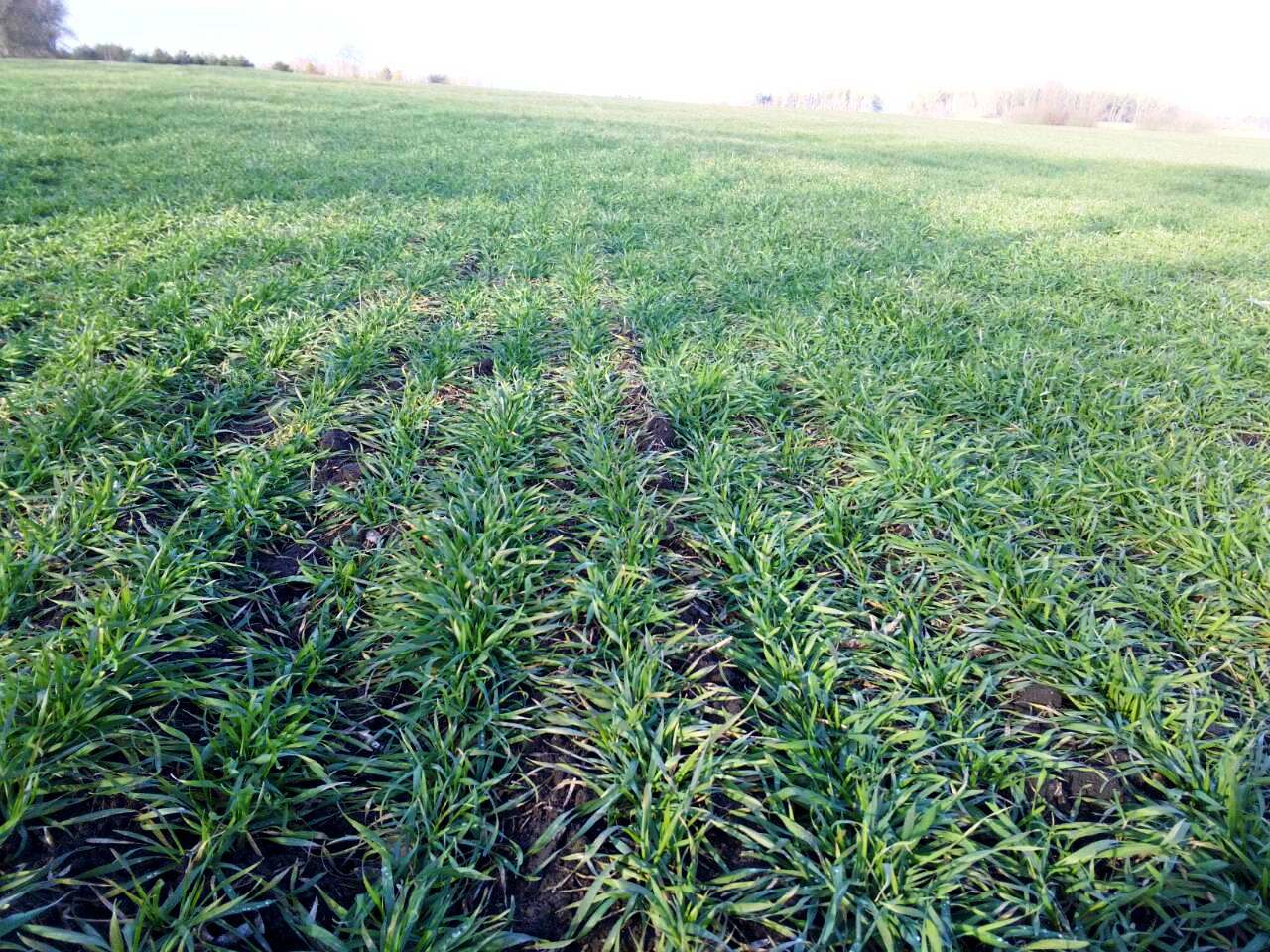|
|
|||||||||||||
|
|
|||||||||||||
Fertilizers spreading by frozen soil...? Modern science and economics says - definitely NO!
Dr. Oleksii Orlov, PhDIn this article, we will talk about management of fertilisers using for agriculture in cold climate |
|||||||||||||
|
|
|
Photo © Dr. Oleksii Orlov
It is harmful to apply nitrogen fertilizers over the snow and frozen soil, even if a small snow cover or without snow, since most of the applied nitrogen will be lost and it's not just a matter of washing off the fertilizers. At photo - green leafs at winter wheat field in Ukraine
Nitrogen fertilizers top dressed in February, after the melts, on the frozen soil, will be dissolved, on the soil surface for at least 1-2 weeks. And all this time, fertilizers will not be used by the plants. During this time, financial losses can range from 15 to 50% of the money spent on the purchase of fertilizers. In a mild winter, wheat leaves remain green throughout the winter (pictured before), but the roots have not possibility of fertilizers nutrients using. In this case, the wheat will be ready to be able to assimilate nutrients from the soil as soon as it begins to grow the root system from the root collar. In countries of temperate climate in warm years, this time begins at the first week of March. At this time, it is advisable to apply fertilizers!
Photo © Dr. Oleksii Orlov, 23.03.2017
According to Canadian scientists, the loss of nitrogen when applying saltpeter on frozen soil with a small amount of snow is from 41 to 45 percent. For urea, nitrogen loss ranges from 49 to 61 percent (mineral nitrogen decreased in all treatments due to denitrification, immobilization, drift and washout). In most cases, wheat freezes not in winter, but in spring when the snow melts, when the water turns into ice, as it was in March-April 2010 around Europe. If we spread fertilizers up to this point, then we are just loss of money. To reduce the risks, fertilizers should not be applied on snow and frozen soil. At photo - winter wheat and in melts water in March
Photo © Dr. Oleksii Orlov, 16.03.2017
At the time of spreading nitrogen fertilizers over the frozen soil, the plants have no roots. Even immediately after a mild winter, the plants are green, but they have no roots. The roots will begin to grow only at a positive average daily temperature. Therefore, plants will normally begin to assimilate nitrogen only a few weeks after it has been applied over the frozen soil, even if you hit the "window" and warm weather began immediately after spreading fertilizers. During this time, a significant part of nitrogen from fertilizers will be lost. At photo - winter wheat without roots in March
Is it possible to apply nitrogen fertilizers by frozen soil if there is no snow or little snow?
Yes, it is possible, and many of us do this, but in this case, depending on the time of application and conditions, the loss of fertilizers will be from 15 to 50%. In this case, consider that for every €100 spent on fertilizers, you are simply throwing away from €15 to €50.
These data are confirmed by the data of many scientific studies carried out by scientists from different countries, including those countries where the climate is similar to ours and in winter the fields with winter crops freeze - Canada, Europe, the USA, etc. Therefore, this practice has stopped there for a long time.
In addition to direct loss of money for the purchase of fertilizers, you also lose profit. After all, that part of fertilizers that is lost when they are applied on frozen soil is no longer used by plants, and no longer does not contribute to an increase in yield!
Video source Serhii Dromov
Fertilizing over snow and frozen soil does not pay off, this is the main reason why it is not done in rich countries. The video shows the spreading of fertilizers over the snow in the Sumy region, Ukraine
I will give a simple calculation that shows that you should not use fertilizers of frozen soil, for example, a field of 100 hectares with well-grown winter wheat ...
-
The planned application rate of saltpeter / ammonium nitrate (N34) by frozen soil is 200 kg/ha
-
You bought ammonium nitrate, which cost you €525/ton including delivery. And for the whole field you bought saltpeter for (438/5) x 100 = €10500!
-
Imagine that with the standard losses of nitrogen fertilizers when applied on frozen soil without snow (15-50%), you immediately throw away an amount of €1575-$5250!
-
Now let's calculate the loss of yield and profit from the fact that fertilizers did not work
-
With a nitrate rate of 200 kg/ha, in total you apply 34 x 2 = 68 kg / ha of active nitrogen substance. Considering that, on average, wheat consumes 25 kg of nitrogen for each ton of yield, then the increase from fertilizers should be 68/25 = 2.72 t/ha. In money, you should receive approximately = 2.72 x €525/ton = €1428/ha. But this is in the event that the fertilizers are completely absorbed
-
When applying nitrogen fertilizers on frozen soil, plants will receive less nitrogen - only 34-51 kg/ha of nitrogen. By €232wheat grain price the yield increase will be 1.36-2.04 t/ha or €316-473/ha
-
Losses of profit from the lack of yield will amount to €316-473/ha. And for all 100 hectares, it will be €31600-47300!
-
And taking into account the loss of money during the purchase of fertilizers, the lost of profit from the application of saltpeter on frozen soil per 100 hectares of winter wheat will be €33175-36830!!!
In fact, this amount will be higher, since the costs of transporting "extra" fertilizers and additional risks inherent of applying saltpeter on frozen soil have not been calculated here.
Photo © Dr. Oleksii Orlov, 18.03.2017
A typical field when spreading nitrogen fertilizers over “frozen and thawed soil”: the snow has almost melted, and it seems that this is the ideal time for spreading. But not many people know that it is impossible to spreading any fertilizers, not only over the snow, but even when there is no more snow and the soil is still frozen
Photo © Dr. Oleksii Orlov, 18.03.2017
If the leaves of wheat died as a result of frost, a lot of snow fell over the winter or the soil was very frozen, then the plants starting of vegetation much longer and it takes much more time from the application of nitrogen fertilizers on the frozen soil and before the active development of the root system begins. In this case, there will be practically no nutrients in the soil at the beginning of active plant growth. When the snow melts, most of the fertilizers are washed off together with the melt water from the field
Photo © Dr. Oleksii Orlov, 2019
The same rule applies not only to winter wheat, but to winter rapeseed and other crops, and simply prepared fields - no (mineral and organic) fertilizers should be scattered over the snow and over frozen soil without snow. This also applies to the most modern fertilizers with nitrification inhibitors and granules coated with polymers
Photo © Dr. Oleksii Orlov, 16.03.2017
If the soil is frozen but there is no snow, is it safe to spread fertilizer? And what will be the losses? It depends on how much rainfall can fall after fertilization. A hard, frozen soil surface increases the risk that, in the event of precipitation, rain or snow, there will be significant washout losses of fertilizer. To avoid economic risk, do not apply any fertilizer until the soil has thawed and is able to absorb water and fertilizer and until the fertilizer begins to react with the soil.
Photo © Dr. Oleksii Orlov, 2012
In recent years, wheat often enters the winter in a germinating stage and overwinters normally as the climate becomes milder. This negates the effectiveness of spreading fertilizers over frozen soil, and when spring feeding, it makes no sense to give a lot of fertilizers at once, since the plants are small
Is it possible to apply manure or ammonia or other fertilizers to frozen soil?
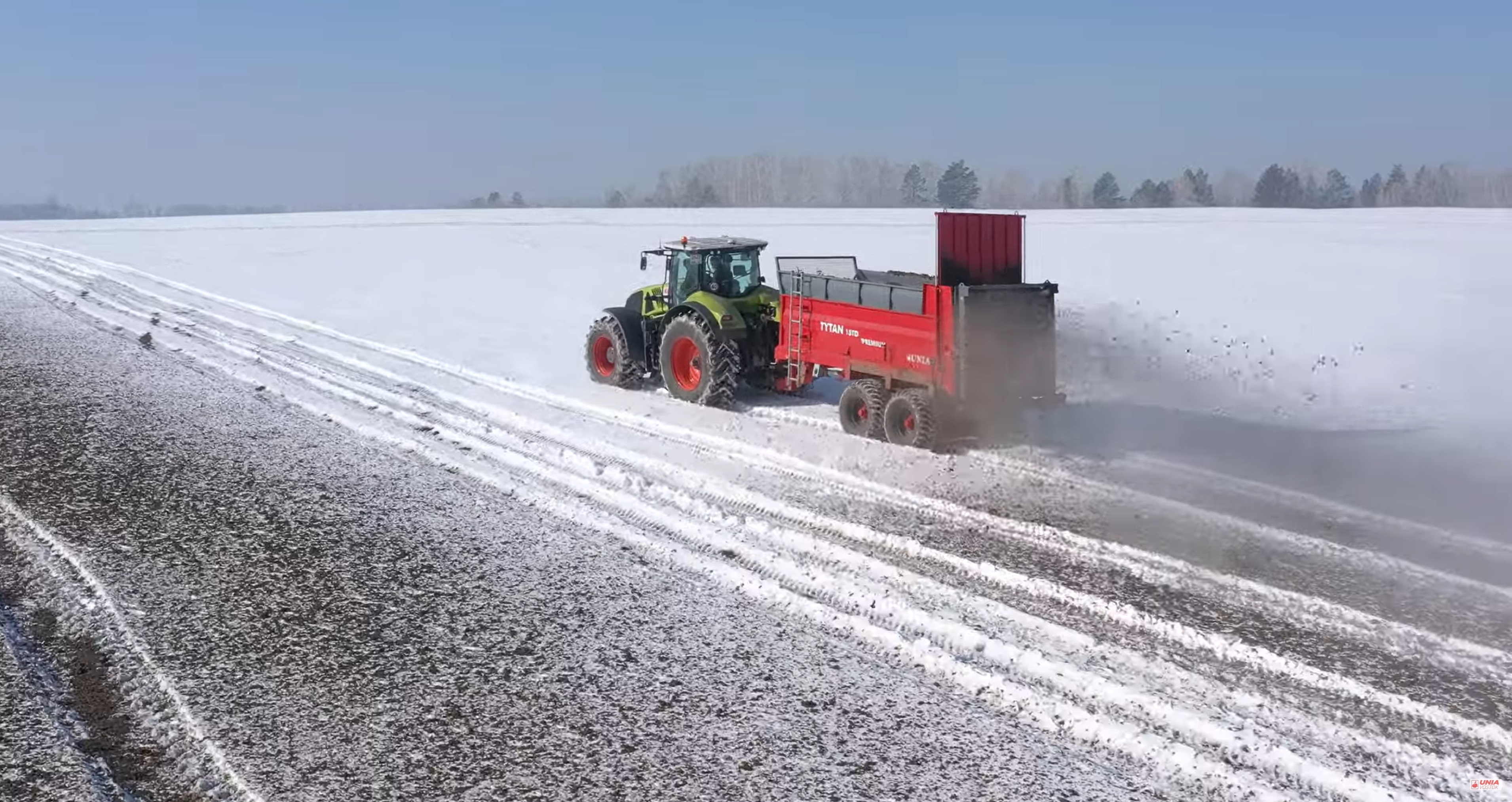
Photo source Unia Vostok
As with ammonium nitrate, any fertilizer applied to frozen soil generates a net loss! In the photo - manure applied to snow
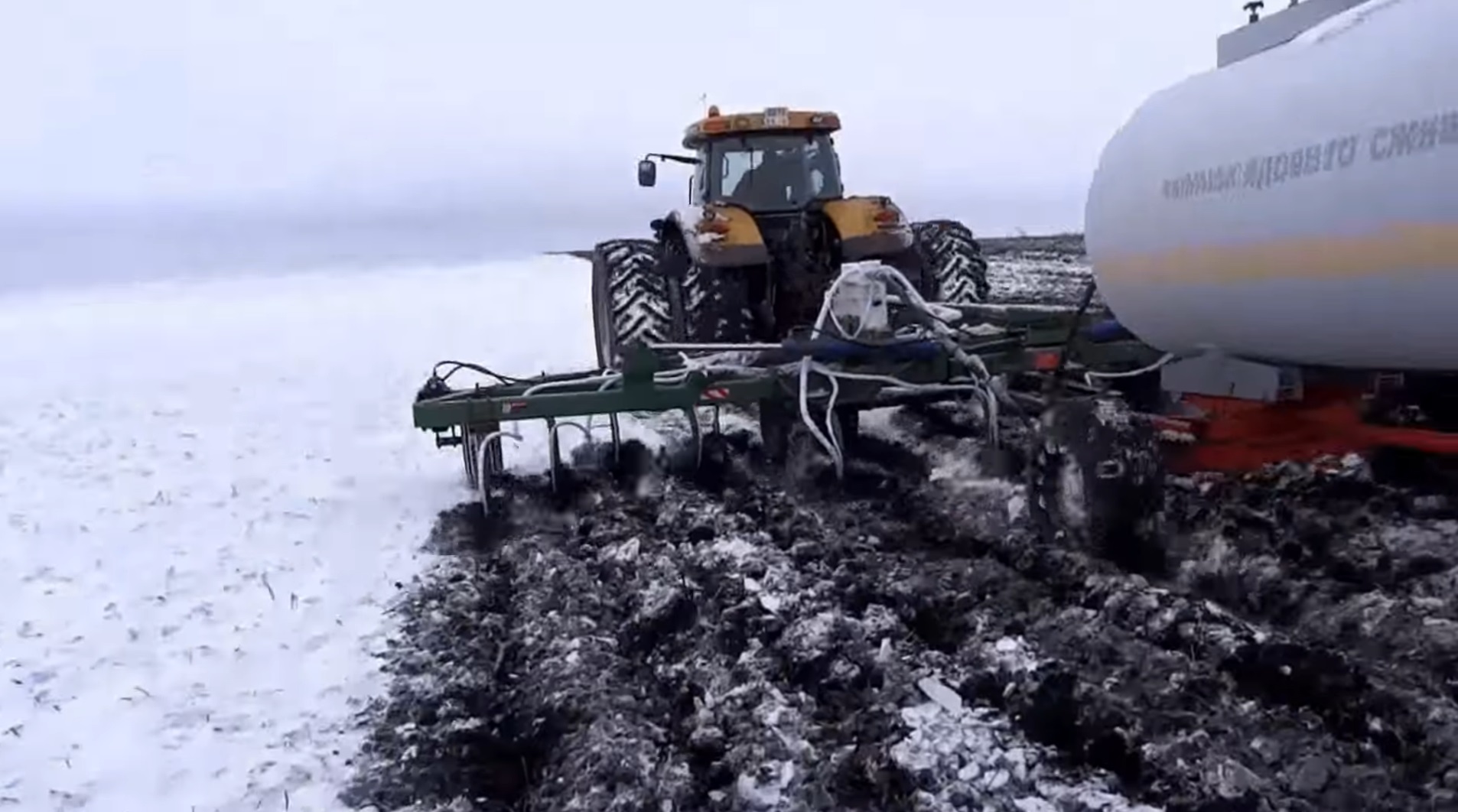
Photo source Kirill Adkin
Most of the money spent on buying and application of these ammonium you simple thrown away! Ammonium increases the nitrogen loss when using the fall :-)
The application of UAN and any liquid fertilizers on snow and frozen soil is a fake. Such an investment never pays off. If you have a good machinery, then it is better to apply fertilizers when the profit from their application will be maximum!
Video source Kirill Adkin
Not only nitrogen fertilizers, but also any other fertilizers are not profitable and dangerous to apply over the snow. The video shows the injection of nitrogen in the snow. Anhydrous ammonia, application in autumn - November 2017, Russian Federation
Where did such an erroneous practice come from - the application of fertilizers by frozen soil?
This practice dates back to the 90s, when farmers in Soviet Union did not have money. Therefore, there was no other way out but to spread fertilizers over the frozen soil. As they could not afford to buy an additional tractor or spreader, in order to complete the work of spreading fertilizer in early spring on already mature soil in time. Since at the same time - need to start sowing!
This practice is still supported and stimulated by fertilizer sellers and manufacturers of special equipment that is used to work by frozen soil, as they are interested in making a profit by the sale of fertilizers and equipment for spreading them.
Unfortunately, such equipment is no produced anywhere in the World, as farmers have long understood that applying any fertilizers (not only nitrogen fertilizers, but also manure) by frozen soil is waste of money. And besides, to waste a lot of time and wait, like Pinocchio on the "field of miracles", for results, where they will not be!
Photo © Dr. Oleksii Orlov, 18.03.2017
Fake machines. The nonsense is that, despite the direct losses from fertilization on frozen soil, an entire industry has emerged in Ukraine, Byelorussia and Russian Federation, working for apply saltpeter and UAN on frozen soil, as they say, demand creates supply! For example, aero-fertilization from airplane of helicopters and "moon rovers" are widespread - special machines with large and low pressure wheels that can work "in the mud." If you already have such a machine - either sell it or use it for correct fertilization then - when the soil is already ripe, and not on frozen soil!
Photo © Dr. Oleksii Orlov, 2017
And this is a more powerful, but also a fake machine... Since there is a demand, the "technologies" have gone further - more productive, heavy and powerful machines have been created for working on frozen soil. Unfortunately, due to their mass, they can only work on snow and on frozen ground. In the mud - no. And best of all they work on already matured soil and no differ from a conventional tractor. But these are very expensive machines - more than $120 thousand! And surprisingly, many farmers buy them! In fact, it makes no economic sense for a farmer to buy such machines
Photo © Dr. Oleksii Orlov, 23.03.2017
Traces from the stalled in mud "moon rover" / low pressure wheels machine for fertilizers spreading. Fertilization by frozen soil is associated with many problems. The "window" of application is very small - 1-3 days, and in recent years - frozen soil is often absent. When working on frozen soil, equipment very often slips and is carried down the slope, even "moon rovers", and the plants are damaged. If you work by frozen soil, there will be significant injury to plants by the wheels of the units. When applying fertilizers early in the spring, you need to wait until the soil is ripe
Are there cases where climatic and soil conditions justify the spreading of nitrogen fertilizers over frozen soil?
No, there are no such cases. There are significant risks even for well-drained black soils with excellent to medium texture, which are prevalent in dry regions.
It seems that the likelihood of losing most of the N that is scattered over the soil surface at the end of winter will be small if there is not enough rainfall during the winter or the soil is snow-free to cause significant denitrification, washout or leaching. But this is far from the case! Even under such conditions, nitrogen losses from fertilizers will be 15 to 25%.
And if it rains or snows, the efficiency of fertilization, even in such conditions, will decrease significantly and more significantly, up to 40-60%.
And sometimes, these numbers are much higher. Typically, financial losses from fertilizing by frozen soil range from 20 to 60% or more from the amount that invested.
No farmer in developed countries not applies fertilization on frozen soil for this reason.
Photo © Dr. Oleksii Orlov, 23.03.2017
Irregular traces from "moon rovers" on the field. Given the design of these machines, high-quality spreading of fertilizers and their high-quality work is impossible. Also, like conventional equipment, in mud - they cannot work on slopes as they are very often blown down by the slope. By mud delivery of fertilizers to the field is problematic, as well as control over the work of the "lunar rovers". In fact, they all work not far from the base and carry fertilizers with them, or the "moon rover" picks up fertilizers from road, where fertilizers can be delivered. They work normally only on light snow or when the soil is already dry ... But then fertilizer can be applied with an ordinary tractor
Are there cases when nitrogen fertilizers need to be spread over frozen soil and this cannot be avoided?
Yes there is. This is a case, for the very poor, when there is no tractors and many lands. For example, there is only one tractor, which is used to spread fertilizer, and sow and spray. When the soil is ripe and it will be possible to fertilize winter crops - at this moment it will be necessary to simultaneously sow and apply fertilizers.
But in this case, fertilizers are applied to the soil from which the snow has melted, but it is still frozen. And you can not spread fertilizers into the "puddles", i.e. waterlogged soil. But often this period of time is 1-2 days, and you will need to work at night when the temperature drops and the soil freezes.
Or, for example, your farm is located in an area where there is no rain in the spring, the soil dries up quickly and you cannot spread fertilizer on the still wet soil. And you do not have a spring harrow to loosen the topsoil and then spread fertilizer on wet soil or apply UAN. In this case, you should either apply nitrogen fertilizers on the frozen soil and incur significant financial losses, or buy a spring harrow. Buy a spring harrow in this case, it will be preferable. And such a harrow is not expensive. You will return on investment for it in this year on 50 hectares of good wheat.
But in fact, there is no dry soil, since in a temperate climate, where wheat and other winter crops are grown, it always rains in the spring.
Losses of funds spent on fertilizers will be significant in case of frozen soil spreading. And growing winter crops may not be profitable. Consider buying another additional tractor, or selling your old tractor and purchasing a higher performance tractor, spreader, or new planter. And also think, maybe it would be better to hire an employee and work in several shifts? And make good money thanks to the correct fertilization?
What happens if fertilizers will be spread over the frozen soil and after that it will snow or rain?
If this happens, then most of the fertilizer will be lost.
What happens if frosts hit after fertilization?
In this case, the probability of plant death is very high. There are few cases of crop deaths from repeated spring frosts, but it is known that over the past half century, they were at least twice, and the crops that were fertilized in February by frozen soil died first. The last such year was in 2002-2003, when wheat froze even in the southern regions.
Photo source Unia Vostok
In some countries, such as the Russian Federation, applying any fertilizer over snow or frozen soil is a common practice, although many are already starting to count their money correctly and are no longer doing it. The video shows a Titan 18 TD organic fertilizer spreader in the Irkutsk region, Russian Federation. It is unprofitable to apply both organic and mineral fertilizers on snow and frozen soil!
What are the features of early fertilization in fields with winter crops grown on sandy soils?
For wheat grown on sandy soils, very early nitrogen application it is bad decision.
On these soils, there is a high probability that the nitrogen spread before start of vegetation will be completely washed out of the root zone if precipitation occurs. In this case, in order to cope with this risk, one should wait for the "greening" of wheat crops, that is, the time when photosynthesis and vegetation will begin. Only then should nitrogen fertilizers be spread over sandy soils.
Sandy soils are also always an increased level of acidity and a lack of nutrients.
Saltpeter, ammonium sulfate and other nitrogen fertilizers acidify the soil - and this has a negative effect on yields and a lack of additional profit from fertilization. This should be known when using nitrogen fertilizers on acidic soils.
If you have not carried out liming, then some of the nutrients from fertilizers will be lost, since plants, even with sufficient nitrogen content, will not be able to take it from the soil. Often carrying out liming of soils, improves nitrogen assimilation and increases yields by 40-60%.
With a lack of sulfur in the soil, nitrogen is better assimilated if the first, earliest spring application is to give fertilizers containing sulfur, for example ammonium sulfate (N20.6S23.5), if granular sulfur was not introduced into the soil before.
What is the best way to start applying nitrogen fertilizers in a zone of sufficient moisture?
It is best to apply as soon as the soil is ripe and the tractor can enter the field and plants start of growing root hairs and vegetation.
For information on how to properly apply fertilizer to wheat, please read this article: Удобрение и подкормка пшеницы
Photo source: RAUCH, 10.04.2015
In areas of sufficient moisture, nitrogen fertilizers should be spread as early as possible, as soon as the soil is ripe and plans start consume water and nutrition through root hairs and the tractor can enter the field. And the sooner the better
In sufficient moisture area there are no risks when spreading fertilizers, since after spreading it will rain, the fertilizers will dissolve in water and will be absorbed by the growing and active plant roots. But you need to know - that you need to prepare well and do it as soon as you can enter the field! This usually happens from late March to early April. But there were years when this happened at the very beginning of March, and in the south it could be two or three weeks earlier. The first application - as early as possible, the second - when the second node appears on the wheat. Any time from the appearance of the second node until the appearance of the flag leaf is favorable for the application of nitrogen fertilizers
What is the best way to start applying of nitrogen fertilizers if the climate is dry and there is usually no rain in spring? The climate changes and becomes dry, often in spring there is no rain for a long time. How, then, should you fertilize wheat?
Yes, even in dry conditions, you can successfully apply fertilizer immediately after the snow melts, then we will consider such methods.
Photo © Dr. Oleksii Orlov, 8.04.2010
Late side dressing in dry conditions. Earlier, grain seeders were used for such purposes, while many wheat plants were killed, and this could not be done on rapeseed. Unfortunately, the seeder cannot be used to feed poorly grown winter crops and crops that have come out from winter in the germination phase (which is quite a frequent occurrence in recent years). Many farmers still use seeders for side dressing N, but there are also more modern and gentle methods
Photo source: Hatzenbichler
If the snow melted early, and it immediately became warm, the topsoil dries quickly, and no rain is expected, then fertilizers spreading over the soil surface will not dissolve and will not be absorbed by plants. Since for assimilation by plants, fertilizers must be dissolved in water. In this case, you need to loosen the topsoil with a spring harrow and immediately behind it, spread fertilizers into the still wet soil or apply UAN. In addition, this combing with the harrow has a beneficial effect to the plants. There are machines (pictured) that combine a spring harrow and a spreader - this is generally ideal variant!
Photo © Dr. Oleksii Orlov, 27.04.2011
Also, special applicators for Side Dressing have proven themselves well, that is, for applying fertilizers directly to the soil. In the photo - an applicator with rotating needle discs for applying liquid fertilizers to the soil
Photo source
In dry climates, it is best to feed with liquid fertilizers. Sometimes even liquid ammonia is used (in the earliest spring, while wheat roots are still developed). Some soil application applicators can be used for successful spring liquid fertilization on wheat. Even in dry climates. And not only for the very first top dressing, but also for fertilizing the soil between the rows at the end of tillering, then when usually the topsoil is already dry, and the usual spreading will no longer give an effect, and the need for fertilizers in plants is maximum. There are various modifications of these applicators - tracked and wheeled
The best time to apply nitrogen fertilizers on wheat is when the soil is ripe and the tractor is no longer stuck in the soil. At the same time, the soil is still moist and fertilizers are guaranteed to be absorbed by the roots. This is usually stage 2-5. During this time, nitrogen fertilization is most effective. If the top layer is already dry, the harrow should be used immediately after spreading the fertilizer, or before that (whichever is better). It is necessary for the fertilizer to fall into the moist soil layer, so you can use the spreader and harrow in one unit. And for re-feeding, when the soil is already dry, fertilizers should be applied only to the soil, to the wet layer using special applicators
Thus, fertilizing with nitrogen and applying any fertilizers on frozen soil, despite all the existing stereotypes, not only does not bring benefits, but is also associated with significant risks, it reduces yields and leads to significant unnecessary waste of time, efforts and loss of money!
-------------------
Contact us for consulting and creation of profitable projects!
We guarantee the best quality of services
Contact Us
